On August 17th, “Inheritor Evening” as one of the series activities of “Evening on the Silk Road” was held at China National Silk Museum. This activity was hosted by China National Silk Museum, was guided by Zhejiang People’s Association for Friendship with Foreign Countries and Zhejiang Cultural and Arts Exchange Promotion Association, was co-organized by Hangzhou Municipal Tourism Commission and Hangzhou City Brand Promotion Association, and also was supported by Xiaofeng Bookstore and Deqing Cultural Center (intangible cultural heritage center).
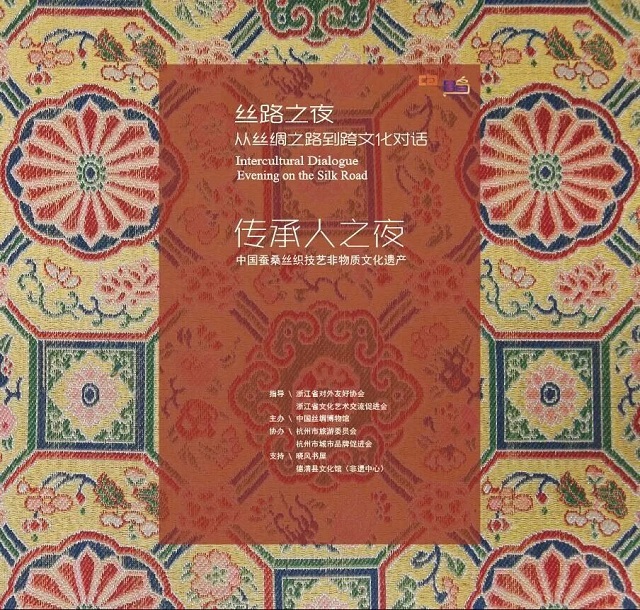
Curator Zhaofeng guided the guests to visit the “A World of Looms: Weaving Technology and Textile Arts in China and Beyond” exhibition, and gave a comprehensive and in-depth interpretation through the abundant physical looms and the live demonstration of various kinds of looms.

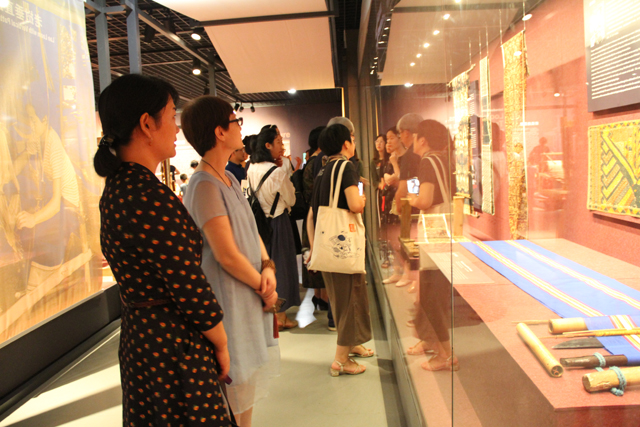
As a supporting activity, “Inheritor Evening” invited many inheritors of weaving projects that was included in the intangible cultural heritage list to share the inheritance and innovation of Chinese silk weaving techniques with the public.
Wang Chen, the inheritor of song brocade weaving techniques and the deputy curator of Suzhou Silk Museum, showed the crafts features and techniques inheritance of song brocade in detail through rich picture materials. The exquisite culture and creative products also showed the innovation and development of song brocade.
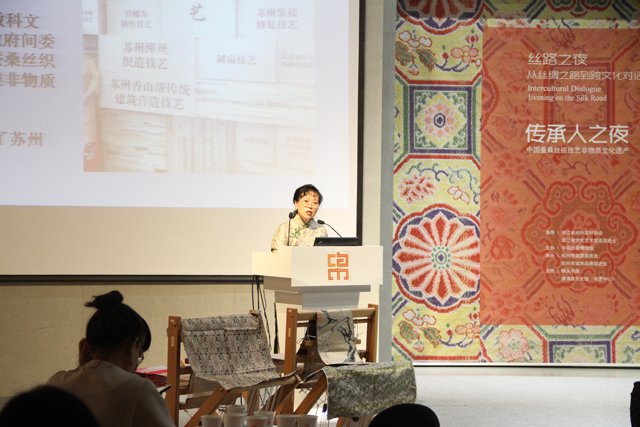
Over a thousand years of history, shu brocade has always been the representative of the fine arts of brocade in China. Due to it is rich in shu brocade in history, Chendu is also known as “Jin Cheng”. Zhong Bingzhang, the founder of Shujiangjinyuan and the curator of Chengdu Shu Brocade Museum, shared the achievements of shu brocade in the fields of conservation, inheritance, development and innovation.
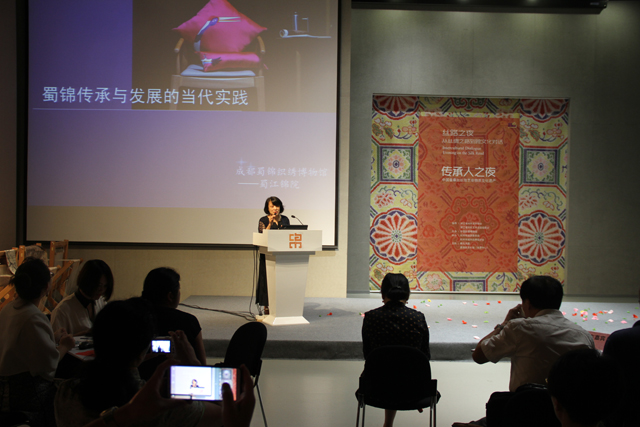
Hang luo is a representative type of silk gauze, which is produced in Hangzhou. Shao Guanxing, the national inheritor of weaving techniques of hang luo, sorted out the history by interpreting the cultural connotation and weaving techniques of hang luo.
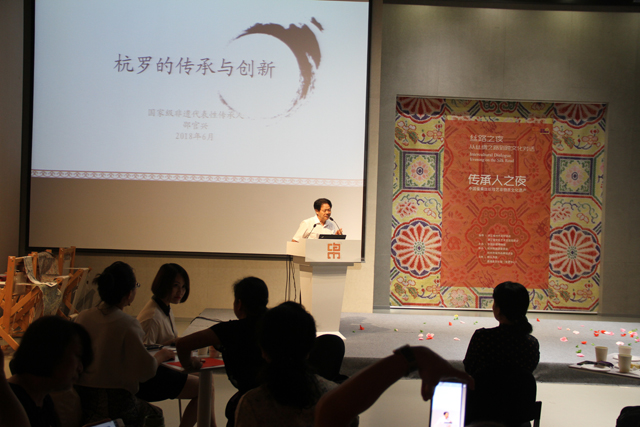
The traditional opera art also has many sericultural elements. Zhang Shuna, the national second class actress, brought “Visting Wife in Mulberry Field”, a selection of shaoming opera “He Wenxiu” for the guests.

A series of performances themed on sericultural village and customs also gave a eye-popper for guests.
Since the late Qing Dynasty and the early Republic of China, “Sweep Silkworm Flower” has been popular in sericulture area of Hangzhou, Jiaxing and Huzhou as one of the sericultural customs. It has been included in UNESCO list of intangible cultural heritage “Chinese silk weaving techniques” project. Xu Yale, the fourth generation descendant of Sweep Silkworm Flower, was invited to perform for the guests in the “Inheritor Evening”.

In Haining, Yunlong village is a traditional sericulture production base with a long history of silkworm culture and related customs. Han Zilong, the art director of Zhejiang Qunwen Music annual concert, led guests to explore the silkworm village by the song “Ballad of Yuanlong”.
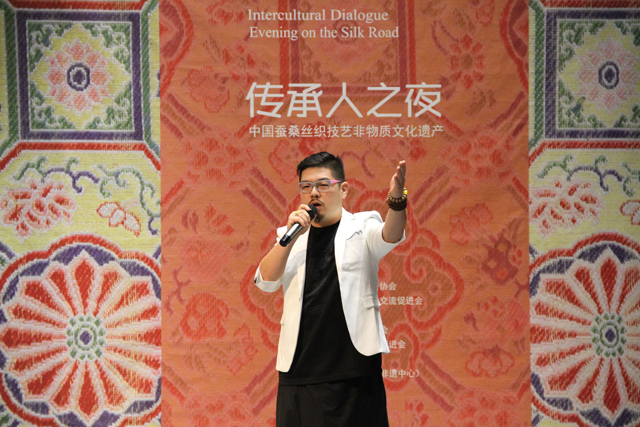
The dance “Silk Reeling Girls” brought by Haining Zhouwangmiao dance team vividly showed the working scenario of silk reeling girls.

The day of activity was the Chinese Valentine’s Day, Magpie Festival, which was also included in the first batch of national intangible cultural heritage by the state council of the People's Republic of China in 2006. China National Silk Museum displayed the “Magpie Festival in painting” in the form of pictures leading guests to feel the charm of Magpie Festival.

(photograpgy by Mao Jiajing)

In the afternoon, “Sericulture and Silk Craftsmanship of China” conservation forum was also held at China National Silk Museum. Related management department, representatives of protection unit, experts and inheritors gathered together to promote communication, interaction and cooperation between the protection powers of Chinese silk weaving techniques to provide new experiences for implementation of intangible cultural heritage projects.
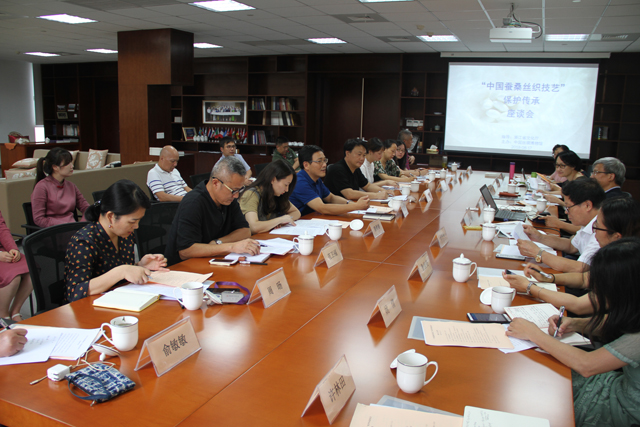
 Pay attention to us
×
Pay attention to us
×